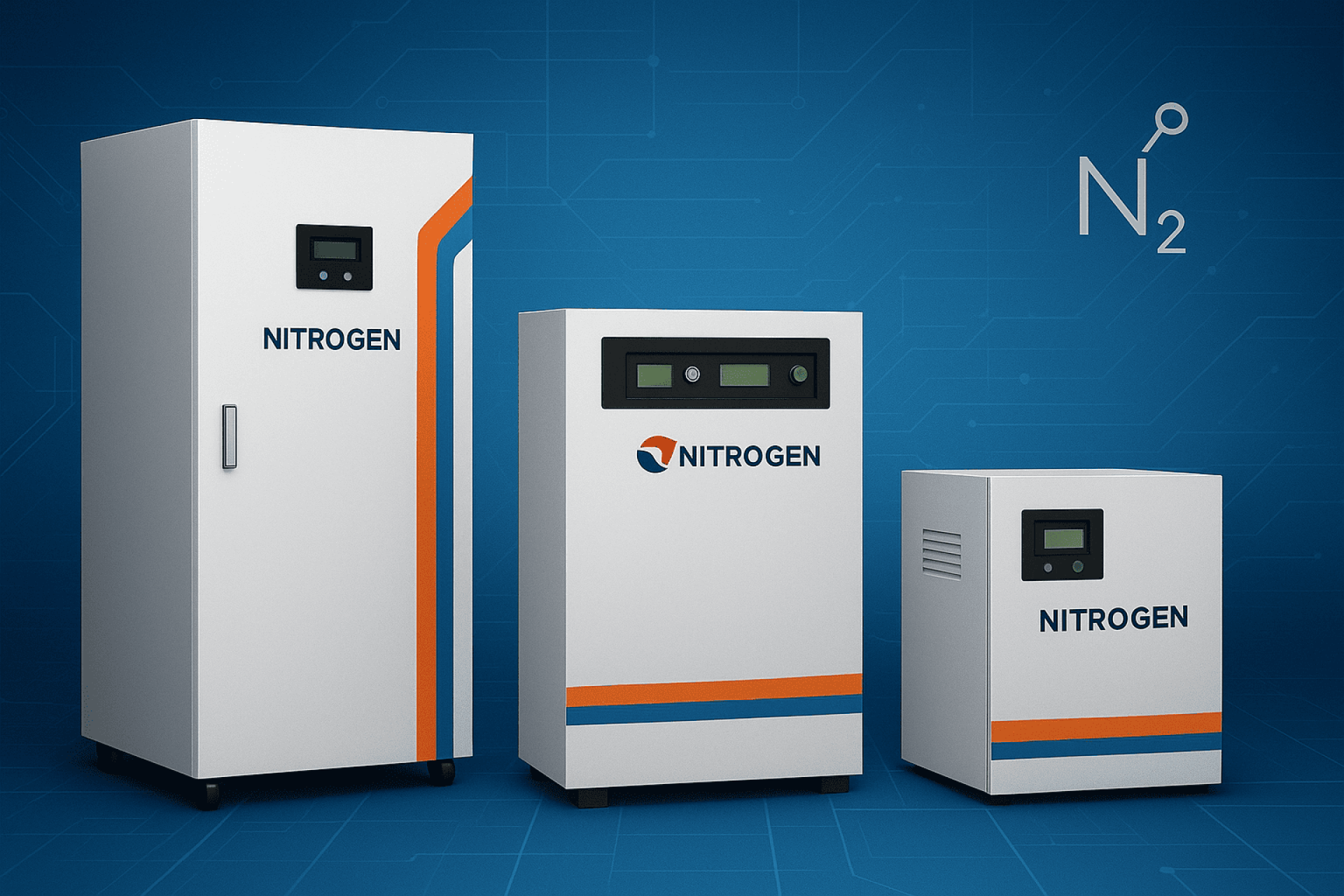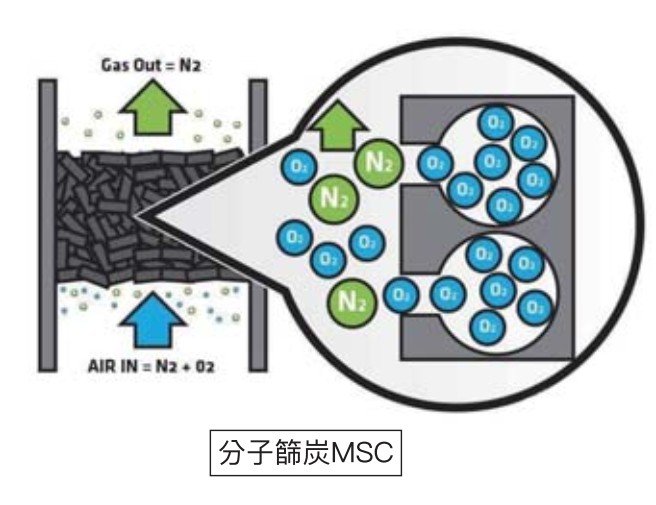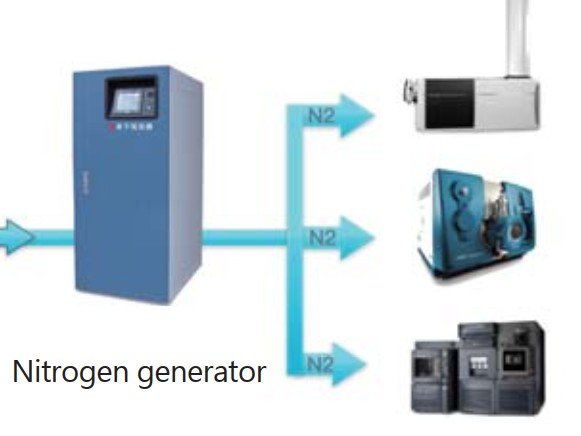Nitrogen Generator What technology does it use, how does it work, and why is it important

A nitrogen generator is a device used to produce nitrogen gas (N) by separating nitrogen from the surrounding air, which already contains about 78% nitrogen. This equipment allows users to produce nitrogen on-site without relying on piped or high-pressure compressed nitrogen cylinders, making it convenient, safe, and cost-effective in the long run.
So, what technologies and mechanisms do nitrogen generators use, how are they operated, what instruments do they connect to, which labs are they suitable for, and why are they important? Hong Kong NTI will explain.

What technologies and mechanisms do nitrogen generators use?
Nitrogen generators mainly rely on two separation technologies:
1. PSA (Pressure Swing Adsorption) technology
PSA is widely used. It works by using an adsorbent material called Carbon Molecular Sieve (CMS), which has very small pores that trap smaller oxygen (O2) molecules while allowing the larger nitrogen (N2) molecules to pass through.
Operation mechanism:
- Adsorption: Compressed air is fed into a vessel filled with CMS under high pressure. The CMS adsorbs oxygen molecules, moisture, and other gases, producing high-purity nitrogen gas that flows out.
- Desorption: When the CMS in the first vessel becomes saturated with oxygen, the system reduces the pressure so the CMS releases the adsorbed oxygen, which is vented away. The system then switches to the second vessel that has regenerated CMS. This alternating cycle (swing) allows continuous nitrogen production.
2. Membrane technology
This method uses membranes made of hollow fiber that preferentially allow some gases to permeate faster than others.
Operation mechanism:
- Compressed air is fed into a tube containing many membrane fibers.
- Smaller, faster-permeating molecules such as oxygen, water vapor, and carbon dioxide permeate through the membrane wall to the outside.
- In contrast, larger, slower-permeating nitrogen molecules continue along the fiber length and are collected at the outlet as purified nitrogen gas.

Usage and processes of nitrogen generators
Nitrogen is an inert gas that does not easily react chemically with other substances, so it is used across many industries and processes. The main purposes of using nitrogen generators include:
- Oxidation prevention: Use nitrogen to replace oxygen and prevent product deterioration, e.g., food and beverage packaging (snack packaging, wine preservation) and electronics (soldering).
- Inerting & blanketing: In chemical and petrochemical industries, nitrogen is used to blanket flammable chemicals or fuels in storage tanks to prevent contact with atmospheric oxygen and reduce fire risk.
- Controlled atmosphere: In laboratories or industrial processes requiring oxygen-free environments.
What instruments do nitrogen generators connect to?
In laboratories, nitrogen generators are often connected directly to analytical instruments to supply nitrogen for their operation. Examples:
- LC-MS (Liquid ChromatographyMass Spectrometry): Nitrogen is used as a nebulizing gas for solvent removal and as curtain gas to prevent contamination of the mass spectrometer.
- GC (Gas Chromatography): Used as a carrier gas to transport sample components through the column for separation.
- Other analyzers: e.g., particle size analyzers, evaporators, and glove boxes.
Which labs use nitrogen generators?
- Analytical chemistry labs: with advanced analytical instruments as mentioned above
- Pharmaceutical and biotech labs: for R&D or quality control
- Food and beverage labs: for component analysis and QC
- Environmental labs: for detecting contaminants
Why are nitrogen generators important?
Using a nitrogen generator is important for safety (reducing explosion/fire risk), convenience, operational efficiency (steady supply of gas), and cost-effectiveness (reducing logistics and cylinder handling).
Hong Kong NTI provider and distributor of nitrogen generators
We supply high-quality nitrogen generators featuring real-time purity and flow monitoring, automatic condensate drain, low maintenance cost, and PSA technology offering nitrogen purity from 9599.999%. Hong Kong NTI provides a range of high-precision instruments including nitrogen generators. With over 15 years of expertise, we deliver tools for the semiconductor, electronics, and nanotechnology industries to support efficient R&D and production. For inquiries, contact us at:
Address: 725 S-Metro Building, 20th Floor, Sukhumvit Road, Khlong Tan Nuea, Watthana, Bangkok
Phone: 02-821-5278
Email: info@hknti.com


